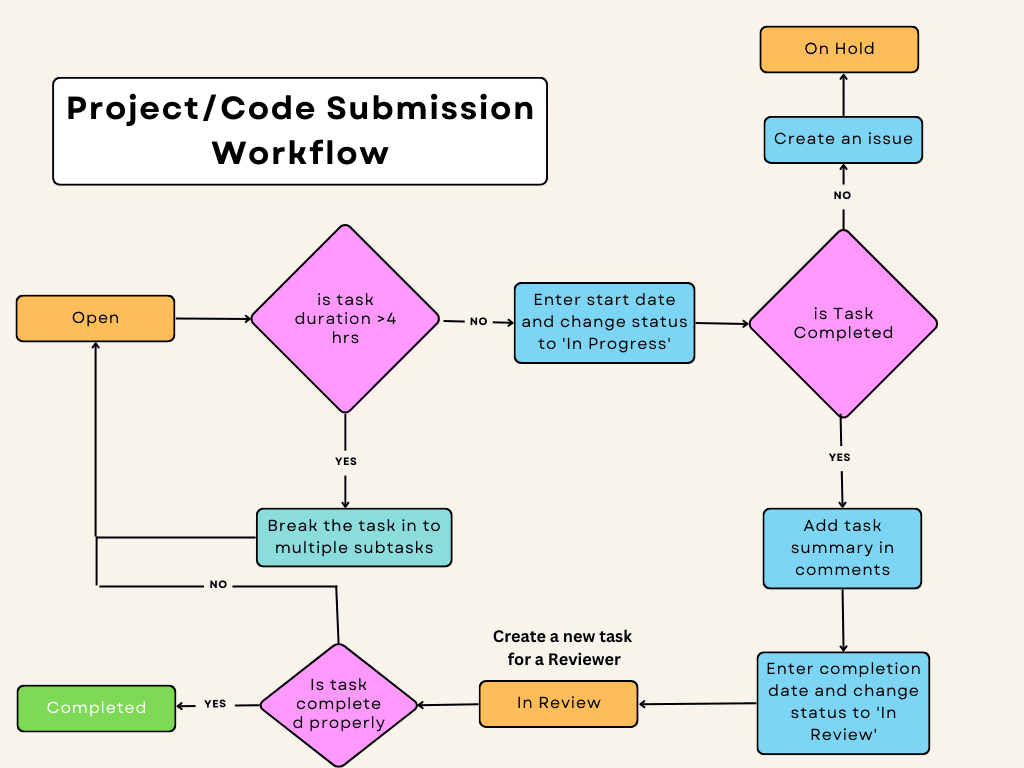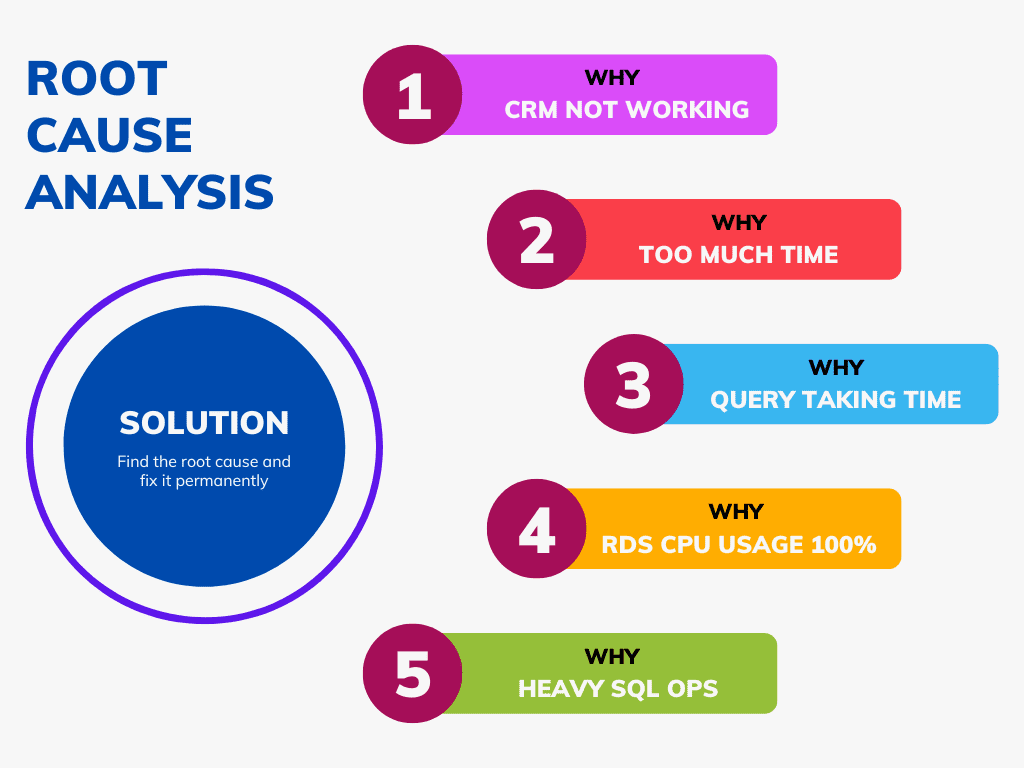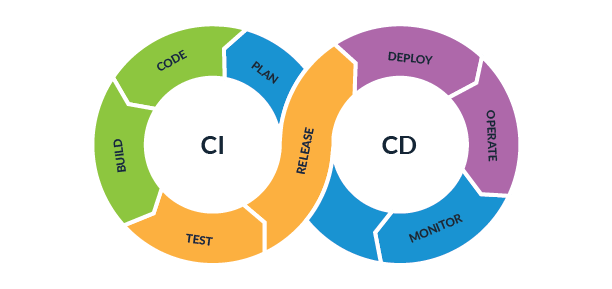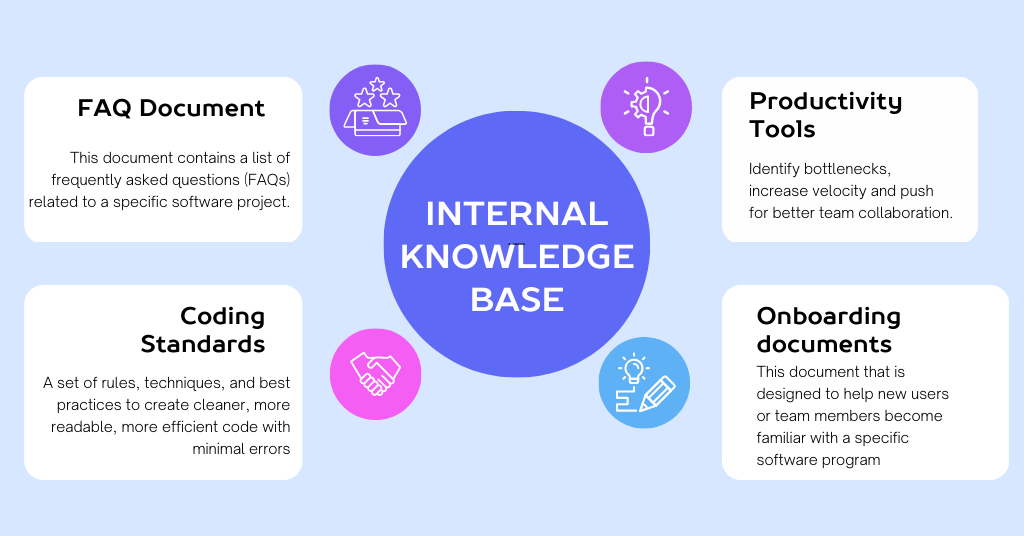How to create a better software development team?

Do you have a software development team? If you want to boost their productivity, you’ve come to the right place. Keep reading this blog to learn more. As technology grows in significance, the need for proficient software developers is higher than ever before. However, creating a productive team is no simple task.
In this guide, we’ll show you how to build a productive software development team that achieves excellent results. We’ll cover everything from creating a culture of productivity to measuring the team’s performance. If you’re ready to create a winning team, let’s begin.
1. Plan your weekly schedule

Do you find most of the team members overwhelmed with the number of tasks that need to be completed each week? Do they struggle to balance work, personal life, and other responsibilities? Many people struggle with managing their time effectively and finding a work-life balance that works for them. Yet, with the right approach, you can plan your weekly schedule in a way that maximizes your productivity and helps you achieve your goals.
Here is the list of things that you need to do to have a productive week:
Prioritize tasks

When planning your week, the key is to focus on tasks based on their importance and urgency. If you’re a developer, focus on implementing or fixing a feature that needs attention. Therefore, you need to focus on the most critical features. After that, keep tasks like trying alternates for the solution as low-priority tasks. I hope that once the feature is done, you can always refine it.
As a senior executive, your priority should be to focus on:
- Improve the efficiency of the team by automating manual processes,
- Workflow designing,
- and mentoring the team with the Internal Knowledge Base.
So, those should be your top priorities and other tasks should be either delegated or moved to a lower priority. This will help you focus on the most critical tasks and avoid wasting time on less important tasks. In other words, learn to say no to tasks and projects that are not priorities or that you do not have time for.
Create a routine

Creating a routine can help you establish good habits and increase productivity. Try to schedule tasks at the same time each week to create a consistent routine. In summary, if you make a weekly plan every Saturday evening, your brain will get used to it, and it will be easier to focus during that time. Overall, you should also analyse the progress to find ways to improve and adjust as required.
You can use Google Calendar or Microsoft Teams to plan your weekly tasks. Our Weekly Calendar Automation tool, based on Google Sheets and Google Calendar. You can use this tool to create your schedule by creating tasks using a sheet, which is equally important. It also allows you to add specific rules during the week’s planning. For example, you can have a rule that a task should be less than four hours in my weekly plan. So this tool helps decrease the time and effort necessary to organise your weekly tasks.
Using this tool, we were able to reduce the time required to create the weekly plan by around 30%. This tool has proven to be very useful in improving the planning process. So we strongly recommend that you use this tool for yourself and your team.
Cut down distractions

Interruptions and context switching have an immediate effect on a team’s productivity. Studies Reveal the shocking effects of distractions at work. So you should try to cut down on distractions while working on important tasks. It is generally recommended to focus on one task at a time, and cut down on distractions to allow for deep concentration and optimal performance. We recommend our people avoid mobile applications and desktop notifications during deep work.
You can use tools like Clockify (it’s free) to track your activities and distractions. You may use this tool to discover instances where you switch between many browser tabs or apps in a short period of time. This useful feature allows you to recognise such trends and build a strategy to address and fix the issue.
2. Speed up the reading and watching
As a software team, reading and watching videos are crucial parts of our job. You need to consume a lot of information on a regular basis, whether it’s code or documentation. It equips you with the necessary knowledge and keeps you informed about current developments, enabling you to stay ahead of the curve.

As you improve your speed, it will save you time, allowing you to complete documentation or videos in a shorter timeframe. Additionally, it enhances your comprehension as your brain focuses on the material. Also, when you read or watch more videos, you stay on top of the latest technologies and trends in your field.
At Madgical, we focus on continuous learning and growth for our software development team. We recommend scheduling a daily task for reading blogs and watching videos related to their work or personal interests. Each team member selects a topic for the week and seeks out relevant blogs and videos on that subject. This ensures that each team member is staying up-to-date with the latest industry trends and best practices.
3. Deep Work for productive software development team

Deep work is a concept coined by Cal Newport that refers to the ability to focus without distraction on a demanding task. It requires devoting a significant amount of time and attention to a single task or project. We need to cut down on distractions such as email, social media, or other forms of distraction.
Adding deep work to your team’s routine can increase productivity, improve focus, and reduce stress. You can establish a process for cultivating the ability to focus on a single task to solve complex problems, and achieve your goals.
We encourage our team members to block out 3–4 hours in their daily schedule to focus only on a single task with no interruptions. By carving out this dedicated time for deep work, our team members can immerse themselves in a task and improve performance.
Our team members can communicate their deep work schedules to their colleagues by sharing their calendar. This action helps in setting expectations, and others can expect a response from this individual after long work hours.
4. Task Workflow optimisation
Task workflow involves improving the efficiency and effectiveness of completing tasks. It means reviewing the current workflow, finding problems, and standardising solutions.

For example, in your company, you can define a workflow for a task as mentioned above:
Code Task Flow
It is important to ensure that any open task is not more than four hours in duration. This is because breaking down tasks into smaller chunks can help you achieve more in less time. Additionally, it allows you to track the progress of your team members more closely. In the past, we have seen instances where developers worked on a task for a week, but the outcome didn’t meet the expected requirements.
So a week’s worth of work resulted in a waste of time and effort. It would make sense to break the task into smaller tasks, as it enables quicker detection and rectification of errors. Additionally, breaking tasks down into smaller chunks facilitates easy sharing among team members. This enables many individuals to work on different aspects of the assignment, leading to faster completion times.
Review Task Flow
After completing the code implementation, the task should transition to the ‘In Review’ state. The system generates a new task for the reviewer, enabling the measurement of team performance. During this stage, the reviewer evaluates the work to ensure it meets the required standards.
If the reviewer approves the task, it progresses to the next development stage. But, the rejected task goes back to the developer for revisions. We mark the failed task as a measure of the team’s productivity. The lower the number of failed tasks, the higher the level of productivity.
By adding these task workflows, teams become more informed about the process, leading to many benefits. These include reduced turnaround time, improved work quality, and enhanced resource use.
5. Root Cause Analysis
It is common to hear that software issues have been fixed, only to have them reported again later on. This is often a sign that the issues are just symptoms of deeper, underlying problems. While your team may find it convenient to fix a problem by providing a simple patch. This approach does not address the root cause and does not protect you from recurring outages.
To avoid future problems, it is crucial to carefully analyze the issue using a root cause analysis (RCA) method. This helps identify the main cause of the problem and find an efficient solution. By adopting this approach, not only can we prevent the problem from happening again, but we can also enhance the overall software quality.
We recently helped a FinTech company that faced an issue with their internal CRM. The problem occurred during working hours, impacting approximately 500 sales representatives. Despite attempting many patches, the team did not investigate to identify the root cause of the issue.
Steps for RCA
When we took charge of this, we conducted the RCA for it using these 5 Qs:

- Why 1: Why does the CRM become unresponsive during the working days?
- Why 2: Why are the processes taking too long?
- Why 3: Why are the queries taking so long?
- Why 4: Why is the RDS taking 100% of the CPU usage?
- Why 5: Data synchronisation with the data lake results in heavy SQL operations?
Our team was able to gain a deeper understanding of the issue and develop a comprehensive solution using RCA. First, find out the root cause of the unresponsiveness. Second, check why processes are taking time, and so on. Although this approach may require extra time and resources, it proves to be a time and cost-saving measure in the long term. We were able to develop an effective and efficient solution and end the unresponsiveness of the system.
6. Automate the manual processes
Automation can enhance the efficiency of software development teams, elevate the quality of their work, and cut costs. You should identify how to automate the manual processes and evaluate the ROI of the proposed solution.
It’s better to automate the cloud infrastructure if your team is consuming a lot of time creating and maintaining it. You can also reduce the complexity, errors, and time for release using tools such as Github Actions, Terraform, and Ansible.
Furthermore, we can improve the quality assurance (QA) process by automating it. We can adopt best practices for writing unit tests and integration tests, using tools like Selenium. Unit tests allow us to examine individual functions and ensure that they perform as expected in every release cycle. Integration tests examine how various components of our software interact with one another. By implementing these practices, we can ensure thorough testing and improve the quality of our software.
Automate Development Process

We recently helped one of our clients automate their deployment process, which used to take a full day for the entire team. We streamlined their continuous integration and continuous deployment (CICD) pipeline using Github Actions. We automate workflows for various stages, such as building, testing code, and deployment. Furthermore, we leveraged Terraform and Ansible to ensure uniform and repeatable deployment processes. Because of the automation of the release cycle, the procedure now requires no manual work.
Once you automate the CICD pipeline, your engineering team can focus on more high-value tasks, such as developing new features. Also, this ensure consistency and reduce the likelihood of human error.
Automate Repetitive Tasks
Our tool the Weekly Progress Report assists in following-up on repetitive tasks for teams and reduces management. For instance, in our company, we need everyone to prepare their weekly plans and presentations and submit them on a specific day. Our tool sends notifications (email and Slack) to team members as they complete their tasks.
7. Work Standardisation using TMS(Time Motion Study)
Time and Motion Study(TMS) is a technique used in industrial engineering to improve the efficiency and productivity of work. It involves analyzing and standardizing the time and motion required to do specific tasks within a process.

This technique facilitates the standardization of work by identifying the most efficient way to perform a task. It aids in eliminating unnecessary movements and reducing wasted time, thereby increasing productivity.
Every team usually has one or more top performers who have developed their own methods to achieve higher quality or productivity. By using TMS analysis, you can identify these best practices and create a standardized procedure for the entire team. It helps in improve their performance and quality of deliverables.
This process guarantee that every team member is operating at their most potential. It can also help identify areas where team members may need additional coaching. In some cases, it can even discover ways to simplify processes and improve effectiveness.
We encourage each team member to create their weekly schedule for the upcoming week. This task can be repetitive, but it’s important for everyone to plan ahead. Thus, we often choose to use this technique to streamline repetitive tasks. To save a few minutes every week, these time savings add up considerably over the course of the year.
We want to share a sample TMS sheet that our team used for this task, and it worked great! We were able to save 30% of the time that we typically spend preparing the weekly schedule.
8. Improve Task Efficiency using Zero Base Target(ZBT)
Zero Base Target (ZBT) is a performance management technique that enables businesses to enhance their operations by achieving optimal outcomes with minimal effort.

In this, the main objective is to automate tasks as much as possible, reducing the need for manual effort.. Or at least reduced to a level that is at least 2 times better than the time taken through TMS. By automating tasks, teams can improve efficiency and reduce the likelihood of errors. This can also free up team members to focus on more high-value tasks that need their skills and expertise
We review their suggestions and make the decision to automate certain manual tasks. One example is streamlining the sync of Google Calendar with a Google Sheet
This automation led to significant time savings and improved accuracy. We created the Weekly Calendar Automation to help individuals in easing weekly planning. We invite you to try out this tool and provide us with your feedback so that we can continue to improve and refine our processes.
9. Collaboration and communication
Building a productive team and ensuring optimal collaboration require effective communication. Communication methods, such as phone conversations, can be useful for making rapid decisions. But they can also present issues for remote teams, particularly when team members operate in different time zones.

The teams may choose to use project management software, to solve these issues. By using these tools, team members can communicate and collaborate without having to be present . This approach allows team members to work at their own pace, be more productive, and still stay connected with each other.
They might establish response time requirements, such as a 24-hour response window. This reduces delays and confusion while still allowing team members to manage their tasks and reply on time.
Sync vs Async Communication
At Madgical, we believe in the importance of focus when it comes to delivering high-quality work. We focus on asynchronous communication as it empowers our team members to work without distractions.
We schedule team meetings once a week, with a maximum of two meetings per week. Furthermore, we strive to arrange meetings in the second half of the day, as individual productivity tends to be lower during that time. We engage our team in cognitive tasks during the morning, capitalizing on the fresh minds of team members. Our goal is to cultivate an environment that enables our team members to perform at their best and deliver high-quality results.
Our team members collaborate with each other, share their experiences, and brainstorm a problem to find a better solution. We encourage peer reviews so that they resolve the issue during the development cycle. They also review blogs or documents from others and keep on learning or improving the quality of the deliverables.
Having peer reviews to identify and resolve issues during the development cycle is crucial. This approach guarantees that our deliverables meet the highest standards and are delivered on time. We encourage team members to review various resources, including blogs, shared by their colleagues. This practice cultivates a culture of continuous learning and improvement
10. Internal Knowledge base for productive software development team

An internal knowledge base promotes knowledge sharing and collaboration within a team. It creates a centralized repository of information for easy access and sharing among team members. This reduces the reliance on time-consuming meetings and interruptions to deep work. It eliminates redundancies and ensures a shared understanding of processes within the team. This fosters increased efficiency, productivity, and better outcomes for the team.
An internal knowledge base is a valuable resource for new team members. It offers a wealth of information about the organization, coupled with its processes, and its culture. This can help reduce onboarding time and ensure that new team members are able to hit the ground running.
The internal knowledge base (KB) comprises different types of information:
- FAQ documentation related to project features
- Onboarding documentation
- Best practices and coding standards
- Productivity tools, and more.
Project FAQ

This document contains a list of frequently asked questions (FAQs) related to a specific software project. This documentation answers the most common questions about the software project. It helps team members, stakeholders, and users understand the project better.
The FAQ documentation can cover various topics, including:
- project goals
- scope
- timeline
- technical requirements
- user requirements
- testing
- and deployment
It has common queries and project objectives, processes, and outcomes.
FAQ documentation reduces the need for repeating responses, saving time and increasing productivity. Further, the documentation serves as a valuable resource for new team members or stakeholders.
OnBoarding Document

This document helps new users or team members become familiar with a specific software program. The document provides:
- A step-by-step guide to using the software
- Covering topics such as installation, configuration, and basic functionality.
The software onboarding document contains information on the product’s features and recommended practises. Overall, it may also include troubleshooting tips and solutions for common issues.
Moreover, the goal of the software onboarding document is to help new users get up to speed and start using the software. The document reduces confusion and frustration, while ensuring that everyone uses the software.
Process Documentation

When a new team member joins an organization, they may be unfamiliar with the processes. Process documentation can aid them in understanding various procedures and tasks.
After a person joins our organization, we send them our standard process document. This document helps them understand their tasks and responsibilities when they start working with us. The document contains the following
- Task Workflow — It defines how they should work on a task allocated to them
- Meetings — It defines the process of our meetings and what’s expected in the meeting
- Write an Issue: It defines how to write an issue whenever someone is stuck. It also helps us create a knowledge base.
- Weekly Presentation: We recommend everyone create a weekly presentation of the tasks done during the week. This allows us to discuss the exact points during our meeting.
- Definition of Done: This contains the information related to the task marked as completed.
- Project Submission: Whenever someone submits a task or project what’s expected from them
A process document’s goal is to give a clear and consistent way for performing a task while simultaneously encouraging teamwork.
Setup Development Environment

Onboarding a new developer is a complex and time-consuming process. Yet, it’s crucial to strive for a streamlined process that enables the new developer to become productive . Setting up a local development environment can improve productivity. As a result, new team members should be able to get up to speed with the development process and be able to work within a day.
There are several tools available for setting up a development environment using containers:
- Dev Container: This tool allows developers to work with code in a containerized environment. It supports various languages and frameworks like Node.js, Python, and Java.
- CodeSpaces: A cloud-based development environment that eliminates the need for a local setup. Developers can work with code in a containerized environment . CodeSpaces integrates with GitHub, facilitating easy access to code repositories.
- DevSpace: This tool enables developers to work with code within a containerized environment. DevSpace supports many languages and frameworks such as Node.js, Java, and Go.
Developers can set up a development environment using one of these tools. This ensures consistency and reproducibility across various machines and environments. This can help streamline the development process and make it easier for developers to work with code in a consistent and reliable manner.
Deployment and Testing on QA/Production Environment

Creating different environments for development and testing manually can be a daunting task. Automating the CI/CD pipeline can greatly simplify the deployment process. To make things easier, you should set up a pipeline that deploys changes to both the Dev and staging environments. It should be designed to ensure seamless deployment across these environments.
Automating the process of building, testing, and deploying code changes eliminates the need for manual intervention. So this approach reduces the risk of errors or issues caused by human error.
When you create an automated CI/CD pipeline, it’s important to pick the right tools and technologies. This may entail utilizing tools such as GitHub Actions, Jenkins, GitLab CI/CD, or CircleCI, among others.
To make the process smoother, developers can simply push their code changes to the designated branch. Once done, the pipeline will automatically handle the build, testing, and deployment of the changes.. This can help reduce the time and effort required to deploy code changes.
Overall Architecture

To understand how data flows within a system, it’s important to have a basic understanding of its overall architecture. This overview should present a clear and concise description of the different components.
The overview includes information such as the system’s main components, their responsibilities. Moreover, it may also include details on the data flow within the system. This includes equally important data collected, processed, stored, and retrieved.
The new members can gain an understanding of the system’s structure and how the various components fit together. This can help them get up to speed and start contributing to the development process. Finally, having a clear understanding of the system architecture can help prevent misunderstandings.
Training Tasks to get started with System

Assigning specific tasks to new recruits is an excellent way to help them become familiar with the system and build confidence. Most importantly, the tasks should be clearly defined and suitable for the skill level and experience of the new recruit.
To streamline the process, you can assign tasks like reviewing code and creating unit tests to others. This will give new team members a chance to learn more about the system’s functions and structure, as well as its code. Along with reviewing and testing, they can also help to ensure that the code is high-quality and bug-free. This improves the stability and reliability of the system.
Assigning predefined tasks can help new recruits become more engaged and productive. Because it gives kids specific goals to work toward from the outset. This can help alleviate any confusion or feeling overwhelmed when starting a new job.
Here are some of the automation tools that we have created to ease the hiring and onboarding process:
Employee Onboarding: This tool simplifies the onboarding process for new hires. you can make the process of onboarding new hires simple with our tool. You can easily add users to Slack and schedule a weekly Google meeting. You can also assign tasks and send a Get Started Document to help them hit the ground running
Hiring Automation: This tool automates the employee hiring process. Besides, this includes assignment submissions and feedback, interviews, and the final joining letter.
Coding Standards and Style for productive software development team

Coding standards and style are crucial for maintaining consistent and logical code writing. Furthermore, they enhance readability, maintainability, and the quality of the code. There are several tools available to enforce coding standards and style guidelines, including:
Tabnine: an AI-powered code completion tool that can suggest code snippets based on the coding style used in the project.
SonarQube: A code quality management platform, is a valuable tool for analyzing code. It also helps in detecting bugs, vulnerabilities, and other issues related to coding standards and style.
Snyk: A security scanning tool that can detect vulnerabilities in third-party dependencies. It also provide guidance on how to fix them.
Development teams can achieve code that is consistently and systematically written. It minimizing the chances of errors and enhances the quality of the codebase. Moreover, these tools aid in mitigating security vulnerabilities and ensuring adherence. It is essential for projects that handle sensitive data or are subject to regulatory requirements.
Productivity Tools for productive software development team

Leveraging tools in software development enhances team efficiency and minimizes manual effort. By using a variety of tools, software development teams can better manage their projects, code, and collaboration. Here is a list of common tools used by software development teams:
- Project Management: Clickup, Jira, Trello, AzureDevOps, Zoho
- Source Code Management: GitHub, Bitbucket
- Continuous Integration/Continuous Deployment: Github Actions, Jenkins
- Code Review: Code Climate, Gerrit
- Collaboration: Slack, Microsoft Teams, Zoom
- Code Quality and Linting: SonarQube, Snyk
- Debugging and Profiling: Chrome DevTools, Firefox DevTools, New Relic
- API Testing: Postman, Insomnia, Paw
- Test Automation: Jest, Mocha, Selenium.
- Writing Tools: Grammarly, Quillbot
- Code Generation: ChatGPT
A software development team’s tools may change over the years, and teams may use various tools for different projects. It is important to look at the team’s processes and resources on a regular basis to ensure they are supporting the team’s goals and objectives.
We have developed a Quality and quantitative team analysis that automates performance measurement. It also provides a centralized location for all tasks and tickets. It helps with efficient project management by following up with due tickets or missing tasks.
Conclusion

In conclusion, establishing a productive software development team is essential for technology-dependent businesses. Yet, building a consistently successful team can be challenging. This guide offers practical advice on cultivating a culture of productivity. Besides that, it measures team performance and utilizing tools to enhance efficiency. To sum up, implementing these strategies forms a winning software development team. They consistently deliver high-quality software products and achieve project objectives.
References
Scientific Speed Reading: How to Read 300% Faster in 20 Minutes
How to Read Faster: 11 Ways to Increase Your Reading Speed.
Learn faster watching and searching YouTube – speed up videos online and be efficient
One thought on “How to create a better software development team?”
Comments are closed.
Kapil, I wanted to take a moment to express my appreciation for your insightful blog post titled “How to Create a Productive Software Development Team”.
Your expertise and clear communication style made it easy for me to grasp the key principles of team productivity in software development. Your well-structured approach and practical tips will undoubtedly help many organizations enhance their teamwork and deliver exceptional results.
Thank you for sharing your knowledge and contributing to the professional growth of the software development community. Keep up the excellent work!